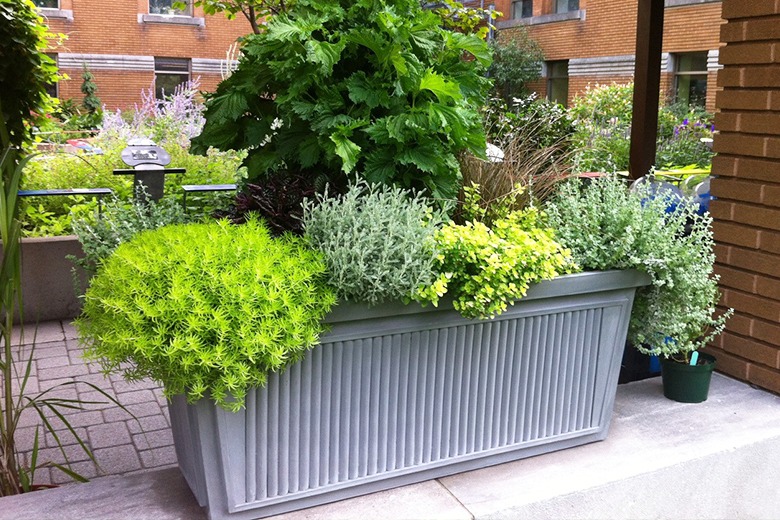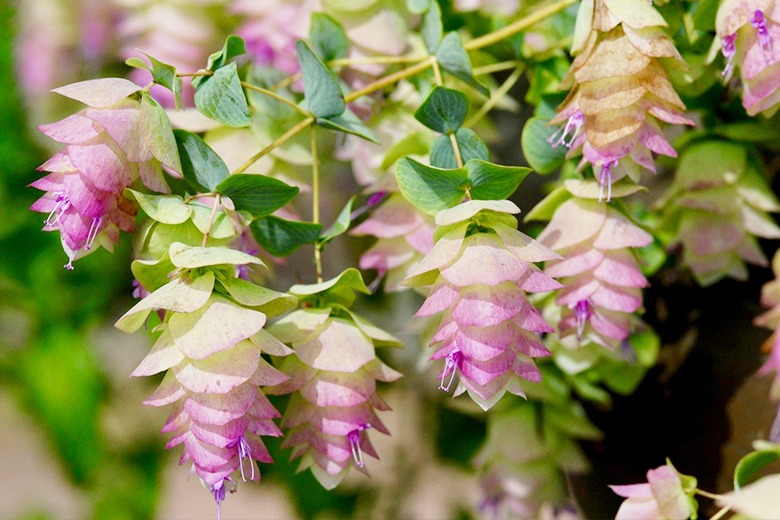Advice From a Pro: Growing Herbs in Containers, With Albert Mondor

Regarding its Urban Agriculture Policy, the Town of Mount Royal can count on the special collaboration of Albert Mondor, horticulturist, biologist and resident of TMR. His tips on gardening will help get Townie households on the right track in creating and maintaining their vegetable garden, throughout the summer.
Growing Herbs in Containers
By Albert Mondor, horticulturist and biologist
There’s nothing like freshly picked herbs to give your summer dishes a burst of flavour! What’s even more fun and satisfying is growing your own herbs in a container on a patio or balcony near the kitchen.
Most herbs can easily be grown in containers outdoors during the summer. Chives, tarragon, marjoram, lemon balm, mint, oregano, parsley, rosemary, savory and thyme are among the least temperamental herbs best suited to growing in containers. Basil is more challenging to grow than most aromatic herbs as it requires a lot of sun, heat and regular watering. As for fennel and dill, while they can be grown in containers, these large herbs grow best in the ground.
Cilantro can go to seed very quickly if exposed to intense sun and if the soil around its roots dries out periodically. It’s best to grow this plant outside in freshly turned soil. You can plant two or three seedlings at different times during May and June. If you’re determined to grow herbs in containers, make sure that the soil is always moist and the container is in a semi-shaded area, well protected from the afternoon sun.

(Credit: Albert Mondor)
While some species like parsley, lemon balm and mint tolerate some shade, most herbs require a minimum of six hours of sunshine for healthy growth. So be sure to find a sunny but protected spot for them.

(Credit: Albert Mondor)
When grown in containers, most herbs enjoy a light, well-drained soil with equal parts compost, sphagnum peat and perlite. That said, there’s no need to fertilize these plants. Whether using synthetic or natural fertilizers, fertilizing herbs boosts their growth and reduces their flavour somewhat.
If you don’t want to buy potted herb plants from a garden centre, you can start your plants from seed. Many herbs can easily be grown from seed, including dill, fennel, basil, oregano, parsley and sage. Most of these can be planted outdoors in containers in May or June.
Basil, which is very sensitive to the cold, is an exception. When the temperature drops below 10 °C, it may even stop growing altogether. Therefore, it’s best to wait until early or even mid-June to plant your basil.
Because of its rapid growth, basil can also be sown indoors in late April or early May—about three to four weeks before the last frost. You only need to cover the seeds with a thin layer of soil. The optimal germination temperature is between 24 and 29 °C. The seedlings can then be transplanted to a larger container, which can then be placed outside in a warm and sunny spot in early or mid-June depending on the region.
Three Original Herbs to Grow on your Patio this Summer
Pesto Perpetuo Basil

Above: Pesto Perpetuo Basil (Credit: Albert Mondor)
Pesto Perpetuo basil’s beautiful edible leaves are green with creamy-white edges. Upright in form, the plant reaches about 45 cm high with a spread of 30 cm by late summer. Its leaves taste similar to regular basil, making it excellent for pesto, while also beautifying your garden.
Hyssop

Above: Hyssop (Credit: Albert Mondor)
Hyssop is an aromatic herb with a lovely long-lasting blue bloom. Its fragrant flowers attract bees and bumblebees almost non-stop from early summer to fall. Hyssop has a delicious aniseed aroma that enhances the taste of soups and salads. And its flowering tops can be used as an infusion to relieve coughs and sore throats.
Kent Beauty Oregano

Above: Kent Beauty Oregano (Credit: Albert Mondor)
Kent Beauty Oregano is certainly one of the most decorative herbs available. This plant is as ornamental as it is edible thanks to its bluish-green foliage and its highly original flowering featuring small purple flowers surrounded by a series of green, rose-tinted hop-like bracts. This oregano prefers a sunny spot in well-drained soil. It tolerates dry periods well.




